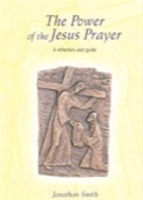
Author: Jonathan Smith

The Open Secret – Contemplative Prayer Within the Church
We now live in a world in which the interest in spirituality of all sorts is on the rise, but the inclination to subscribe to a particular set of beliefs or doctrines is in decline. Sadly, often this has led to a loss of awareness of the close link with spirituality within the Christian tradition. This ignores the unseen but ongoing life of prayer in all denominations within the world-wide Christian faith.
The onlooking public, in general, know that Sunday services take place, though not what happens in them, but that is just the feature that is seen above the mist of misinformation and non-information about our faith which is abroad in the world. Beneath that are millions of faithful individuals in regular prayer, not asking for favours from a partial God, but bringing alive in their minds the needs of the world and seeking to understand them, in the faith that the Spirit of God will move in that world of need. For those who have not experienced prayer the exercise is pointless magical thinking. For those who have sat in silence in the faith that God is present, the experience draws them on, through the inevitable doubts, to pursue their practice.
All prayer is at some level contemplative. It is a conscious effort to enter into a world focussed on God, rather than solely on ourselves, and to recognise that this is the underlying and unchanging reality of human life which is so often lost in business and anxiety. Many, particularly in the swirling world of modern life, feel drawn to develop the contemplative aspect of their prayer. For long periods of Church history, however, this strand of the Christian tradition was regarded as the preserve of a special type of Christian, and found its home mainly in religious orders. True, the Eastern Orthodox churches stayed more aware of the ancient contemplative tradition, but in the West, it faded into a mainly enclosed obscurity.
Awakening in the Western Church
The Western Church awoke to contemplation again to a large extent in response to the emergence of interest in Eastern (non-Christian) religious thought and practice. As gurus and teachers appeared, visitors to Europe and the USA or home-grown, Christian thinkers and writers were prompted to look again for what their own faith could offer in terms of meditation or contemplative practice. Though some few sought to incorporate Eastern thought, particularly Buddhism, into the Christian tradition, the main move was to look back at a Christian past which was full of guidance and accounts relating to silence and contemplation in the presence of God. The fact that Eastern religions acted as something of a spur to the Church to seek out its own tradition has led to confusion for some people, and this new focus has been misunderstood as a heterodox religious syncretism and seen as a danger to the teaching of the Gospel message. One only has to look, though, at the long history of Christian saints and writers to see how deeply embedded in our own tradition is this ‘waiting on God in silence’. The examples are endless, and one will do. Thomas Aquinas is about as orthodox as one can get, and for him contemplation was of primary importance: ‘…the contemplative life is to cling with our whole mind to the love of God and our neighbour, and to desire nothing beside our Creator.’
The Aquinas quotation answers another worry entertained by some – that activities such as Christian contemplation or meditation (the difference between the two terms is imprecise and not relevant here) leads into a self-centred focus on one’s own peace of mind and salvation at the expense of an active life of faith. No doubt it can, but so can sitting in a church pew and doing nothing about what one hears there. In contrast, the love for God and neighbour that Aquinas refers to, if deeply felt, can only lead one to an appropriate response in the world in which we live. It is one of the joys of spending more time in quiet prayer of any sort that one discovers the Gospel message of love, compassion and forgiveness appearing in one’s life unbidden and unearned, a gift of grace from the God whom one has weakly attempted to spend time with.
When it began to be realised that the Christian tradition of contemplation and silent prayer needed to find a more central place, and to become more accessible in the life of the Church, it was not at all clear that many local churches of any denomination were in a position, or had the will or experience, to provide a grounding that would prove enabling to their members. There had been earlier pioneers in the twentieth century, notably Evelyn Underhill, who became prominent in the Anglican Church in the nineteen twenties and thirties as a lay leader of spiritual retreats, guest speaker and proponent of contemplative prayer. In the mid seventies, however, several practical moves took place attempting to bring about a revival within the tradition. Two originated in monastic settings. The work of John Main’s Christian Meditation Centre developed into the World Community for Christian Meditation (WCCM), and Thomas Keating founded the methods of Centering Prayer. Both have since moved out into wider settings. A little before either of these, in 1973, a letter was written to English church papers by the founder of The Julian Meetings (JM). The intention was to ask the Church in general to look to the tradition of contemplative prayer that was pre-existent in the Church. As a result, eleven areas set up contemplative prayer groups. The number of meetings has varied over the years, but there is now a network of some one-hundred-and-forty across the UK, with a small number abroad. JM’s aim remains unchanged since then – to foster and promote the ecumenical practice of contemplative prayer within the Christian tradition, and to provide settings which support this, welcoming all to share their experience of meeting in silence with God.
Julian Meetings
Both WCCM and Centering Prayer teach methods of contemplation or meditation. The Julian Meetings do not teach or promote any particular technique. Meeting members use the time of silence as they find most helpful. All options are there: John Main’s mantra or Thomas Keating’s Centering Prayer, the Jesus Prayer, Lectio Divina, silent repetition of favourite hymns or prayers, or just silence and waiting. JM simply provides the space, which is usually half an hour. Material is available if required, both at local meetings and through the website, for those who are looking for guidance. The half hour is usually introduced by a short reading or by music, and there is often a time for discussion or for socialising afterwards.
The emphasis of The Julian Meetings is that silence and prayer together in the presence of God is not a specialist activity but for all Christians who feel drawn towards it. JM attempts to further this both by providing the local meetings, and also by making information more available.
The need to make this approach to Christian spirituality more widely known is shown by an incident which occurred in the local meeting which I attend. A new member recently came to the meeting. He was a youngish (to me) man who had spent time in India studying and practicing Buddhism, and had recently been baptised. He was intelligent, aware of the world and had read widely in spiritual matters. What was notable was that he expressed his complete surprise at discovering the Christian contemplative and mystical tradition. He was somewhat dumfounded that he had not known that such a strand of Christianity even existed. He listed the Christian writers, both early and contemporary, that he had discovered with delight. I understood his puzzlement since I also came to it through contact with Eastern thought, having been brought up in a church-going family.
As I’ve said, The Julian Meetings do not ‘teach’ any methods of prayer, but simply provide a space and fellowship in which it is possible to explore prayer and silence, and the waiting on God which is at the heart of the Christian tradition. The format is simple. The demands of beginning a group are not beyond the abilities of any faithful Christian. In JM, we are not required to ‘know the answers’, and we are not experts in prayer. Even less are we a spiritual elite, which some mistakenly believe is where contemplative prayer belongs.
For those interested in looking at contemplative, silent prayer together in more detail, the JM website has information about prayer, about leading meetings, and a blog containing useful material –
www.thejulianmeetings.net. The Christian contemplative tradition is a rich vein that anyone can tap into, and at JM, we are ambitious for it to stand alongside other such traditions and to receive equal attention; to raise it above the mists of obscurity and bring it into the full light it deserves within churches of all denominations.


Jonathan Smith is Reader at St Mary de Haura and Shoreham Beach, and is the national communications officer